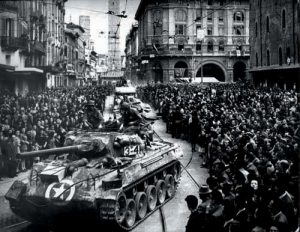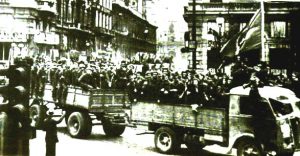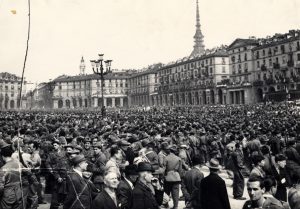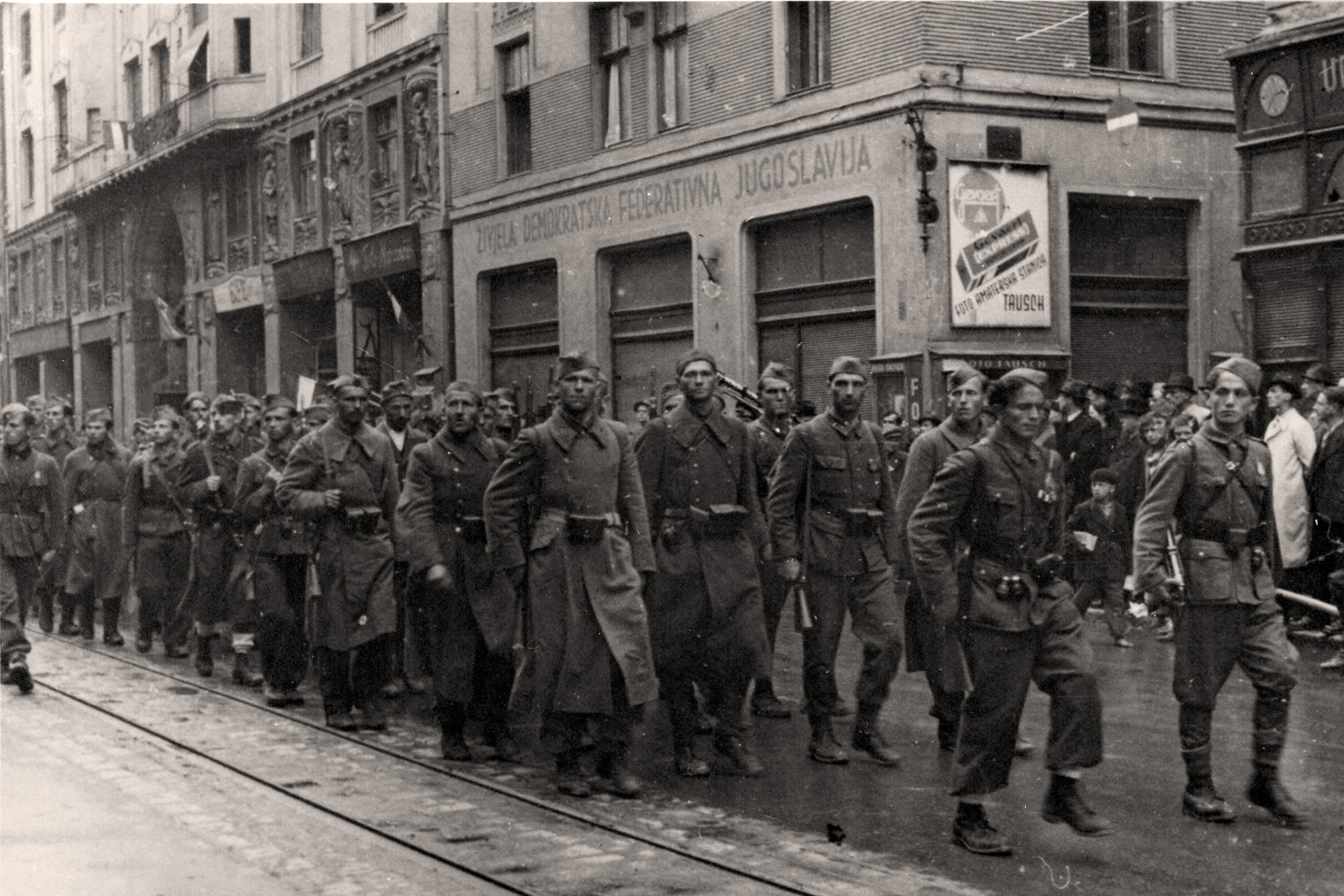25 April 1945, Liberation Day. A day celebrated and shared by the whole nation, but what is the historical event that arises at its roots? The 25th April Report end of fascism (Mussolini will be shot three days later) and the end of the Second World War by the Resistance.
The end of the war
It was the National Liberation Committee (partisans, communists, socialists and all those who took sides against fascism) that fought for a long time for the end of the dictatorship. Some protagonists of the committee will be the same to shape our current Constitution.

The story of Mussolini
Mussolini he leaves the prefecture and wants to surrender to the partisans. As soon as he learned that he would be shot, a series of mobilizations began, including Como and Switzerland. He also remembers to arrange for the pass for Clara Petacci, his official mistress. Despite the attempts of camouflage by the Germans with a helmet and coat, the partisans recognize him.
We are Dongo, from here it will be taken to Giulino di Mezzegra, a place notorious for the shooting of Benito Mussolini and Petacci. The Communist partisan from Como, Michele Moretti, takes up the machine gun. The bodies will be exhibited in Piazzale Loreto in front of the screams, shouts and spitting of the Italian people. A few days earlier the liberation had begun in the north of the country.

Indro Montanelli, regarding summary justice, he affirms that “it was inevitable that they would kill him on the spot to avoid a trial (…) that would have split Italy even more than it already was (…). The trial of Mussolini could not and should not have been done ”.
Historical notes
But let's take a step back to get to know the protagonist of the Fascist period who was killed on April 28th. which is remembered by history during the Liberation Day. He was born in Varano di Costa, near Forlì, in 1883. Omen nomen as evidenced by the baptismal name Benito in honor of Benito Juárez, Mexican rebel. As a young man he worked as an elementary teacher. His political interest grows in Switzerland, where he makes contact with the anarchist and socialist movement.
Back in Italy for the draft and tired of not finding a steady job in the school environment, he accepts a job as trade unionist and editor-in-chief at the Socialist's newspaper in Caesar Battisti. Subversive contents will be the cause of the expulsion. We are at the time of the gap between socialists, in favor of peasants, and republicans, who defend sharecroppers.
He served a year in prison with Nenni and, once free, he directed the socialist newspaper "Come on!" and he moved to Milan with his wife Rachele and the eldest daughter Edda. The favorite daughter will be the same one who will be inflicted with a fatal wound with the killing of her husband Galeazzo Ciano. He will only forgive his father years later for not doing enough.
The end of fascism and the feast of liberation
Mussolini will lead the reins of the country for two decades during which he will carry on his political project: the battle for wheat, the order to hang the crucifix in schools and courts, large architectural investments and in communication routes, reclamations to reduce the contagion of malaria, the right to motherhood and much more.
But Mussolini also brings with him a wave of controversy and indignation that have indelibly marked his aggressive policy. For this the day of the Liberation Day it is lived differently according to political and historical beliefs.

The choice of the date of April 25 took place on April 22, 1946, when the provisional Italian government - the first led by Alcide De Gasperi and the last of the Kingdom of Italy - established with a decree that April 25 should be a national holiday. This date was officially set by law no. 269 of May 1949, presented by De Gasperi to the Senate in September 1948.





